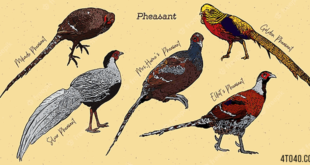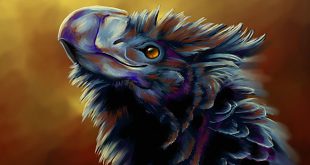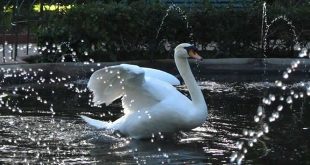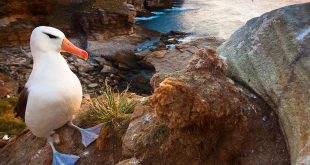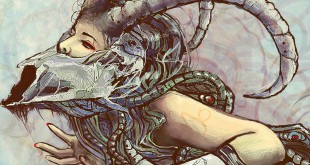Penguin — Penguins (order Sphenisciformes, family Spheniscidae) are a group of aquatic, flightless birds living almost exclusively in the southern hemisphere, especially in Antarctica. Highly adapted for life in the water, penguins have countershaded dark and white plumage, and their wings have become flippers. Most penguins feed on krill, fish, squid, and other forms of Sea life caught while swimming underwater. They spend about half of their lives on land and half in the oceans.
Penguin: Bird Encyclopedia
| Kingdom: | Animalia |
| Phylum: | Chordata |
| Family: | Spheniscidae |
| Order: | Sphenisciformes |
| Class: | Aves |
Although all penguin species are native to the southern hemisphere, they are not found only in cold climates, such as Antarctica. In fact, only a few species of penguin live so far south. Several species are found in the temperate zone, and one species, the Galápagos Penguin, lives near the equator.
The largest living species is the Emperor Penguin (Aptenodytes forsteri): adults average about 1.1 m (3 ft 7 in) tall and weigh 35 kg (75 lb) or more. The smallest penguin species is the Little Blue Penguin (Eudyptula minor), also known as the Fairy Penguin, which stands around 40 cm tall (16 in) and weighs 1 kg (2.2 lb). Among extant penguins, larger penguins inhabit colder regions, while smaller penguins are generally found in temperate or even tropical climates (see also Bergmann’s Rule). Some prehistoric species attained enormous sizes, becoming as tall or as heavy as an adult human. These were not restricted to Antarctic regions; on the contrary, subantarctic regions harboured high diversity, and at least one giant penguin occurred in a region not quite 2,000 km south of the equator 35 mya, in a climate decidedly warmer than today.
Penguins for the most part breed in large colonies, the exceptions being the Yellow-eyed and Fiordland species; these colonies may range in size from as few as a 100 pairs for Gentoo Penguins, to several hundred thousand in the case of King, Macaroni and Chinstrap Penguins. Living in colonies results in a high level of social interaction between birds, which has led to a large repertoire of visual as well as vocal displays in all penguin species. Agonistic displays are those intended to confront or drive off, or alternately appease and avoid conflict with, other individuals.
Penguins form monogamous pairs for a breeding season, though the rate the same pair recouples varies drastically. Most penguins lay two eggs in a clutch, although the two largest species, the Emperor and the King Penguins, lay only one. With the exception of the Emperor Penguin, where the male does it all, all penguins share the incubation duties. These incubation shifts can last days and even weeks as one member of the pair feeds at sea.
Penguins generally only lay one brood; the exception is the Little Penguin, which can raise two or three broods in a season.
Penguin eggs are smaller than any other bird species when compared proportionally to the weight of the parent birds; at 52 g (2 oz), the Little Penguin egg is 4.7% of its mothers’ weight, and the 450 g (1 lb) Emperor Penguin egg is 2.3%. The relatively thick shell forms between 10 and 16 % of the weight of a penguin egg, presumably to minimise risk of breakage in an adverse nesting environment. The yolk, too, is large, and comprises 22–31 % of the egg. Some yolk often remains when a chick is born, and is thought to help sustain it if parents are delayed in returning with food.
Penguins seem to have no special fear of humans, and have approached groups of explorers without hesitation. This is probably because penguins have no land predators in Antarctica or the nearby offshore islands. Instead, penguins are at risk at sea from predators such as the leopard seal. Typically, penguins do not approach closer than about 3 meters (10 ft) at which point they become nervous. This is also the distance that Antarctic tourists are told to keep from penguins (tourists are not supposed to approach closer than 3 meters, but are not expected to withdraw if the penguins come closer).
Penguins are popular around the world, primarily for their unusually upright, waddling gait and (compared to other birds) lack of fear of humans. Their striking black-and-white plumage is often likened to a tuxedo suit. Mistakenly, some artists and writers have penguins based at the North Pole. This is incorrect, as there are almost no wild penguins in the northern hemisphere, except the small group on the northernmost of the Galápagos. The cartoon series Chilly Willy helped perpetuate this myth, as the title penguin would interact with northern-hemisphere species such as polar bears and walruses.
World Penguin Day:
World Penguin Day is celebrated annually on April 25. The day raises awareness about penguin conservation and the importance of protecting these charismatic birds and their habitats. It coincides with the annual northern migration of Adélie penguins in Antarctica. Also, the event focuses on the threats faced by penguin populations, including climate change, habitat destruction, overfishing, and pollution. It also highlights the need for international cooperation and conservation efforts to safeguard these unique species for future generations.
13 Interesting Facts To Know About The Flightless Bird
- The world’s smallest penguin lives in Aotearoa, New Zealand, and is only about 25 cm tall. It’s the smallest of any of the world’s penguins, and their distinctive blue feather colours at the top of their body are why they’re also called the ‘Little Blue Penguin’.
- The penguins’ black backs help them avoid flying predators as they blend into the dark sea below, while the penguins’ white bellies allow predators from below in the sea to mistake their bellies for the bright sky above.
- These flightless birds are world-class swimmers. They can even stay underwater for 20 minutes, and penguins love to sledge on their stomachs to get across the ice quickly.
- The stone or rock plays an important function in the lives of penguins. When a male is courting a female, he does so by giving her a rock. The male frantically searches the entire beach to find the absolute smoothest and best stone. When the perfect stone is found, it is placed in front of the female just like a proposal!
- Penguin poo can be used for so many things. Not only can it be visible from space, but it can also be used as ammunition against predators. This can be an effective way to keep enemies at bay.
- Penguins have several adaptations that help them thrive in cold environments. Their dense layer of feathers provides insulation, keeping them warm in icy waters. Also, they have a thick layer of blubber beneath their skin, acting as further insulation and a source of energy.
- During harsh weather conditions or a scarcity of food, some penguin species enter a state of torpor, where their metabolic rate decreases significantly. This allows them to conserve energy until conditions improve, enabling their survival during challenging times.
- Many penguin species are known for their monogamous mating behavior, where pairs bond for life. They often engage in elaborate courtship rituals, such as vocalizing, preening, and presenting pebbles to their mates. This bond helps them successfully raise their offspring.
- Penguins exhibit remarkable parental care, with both parents sharing responsibilities for incubating eggs and caring for chicks. They take turns keeping eggs warm by cradling them on their feet or under a flap of skin called the brood pouch. After hatching, parents continue to feed and protect their chicks until they are old enough to fend for themselves.
- Penguins often nest in large colonies, ranging from a few hundred to several thousand individuals. These colonies provide protection from predators and help penguins maintain body heat in cold environments. However, they also face challenges such as competition for nesting sites and resources within these crowded colonies.
- Although often associated with Antarctica, penguins inhabit a range of environments, including subantarctic islands and regions of South America, Africa, Australia, and New Zealand. They are uniquely adapted to thrive in these cold and often remote locations.
- Penguins are opportunistic feeders, consuming a variety of prey depending on their species and location. While some primarily feed on fish, others may also consume krill, squid, or even crustaceans. This adaptability allows them to survive in diverse marine ecosystems.
- Penguins face various threats, including climate change, habitat loss, overfishing, pollution, and predation by introduced species. Conservation efforts focus on protecting their breeding colonies, establishing marine protected areas, mitigating climate change impacts, and reducing bycatch in fisheries to ensure the long-term survival of penguin populations.
 Kids Portal For Parents India Kids Network
Kids Portal For Parents India Kids Network

